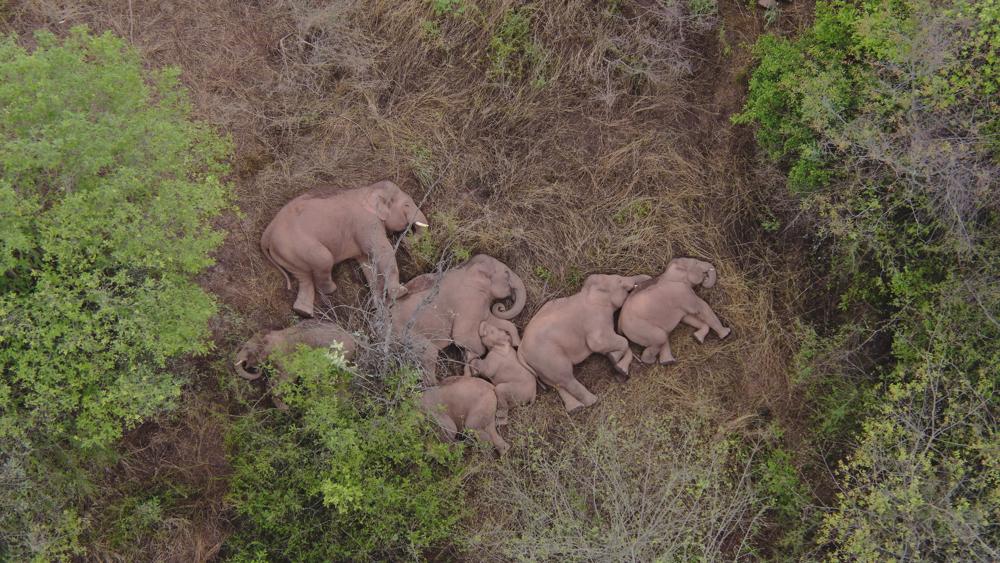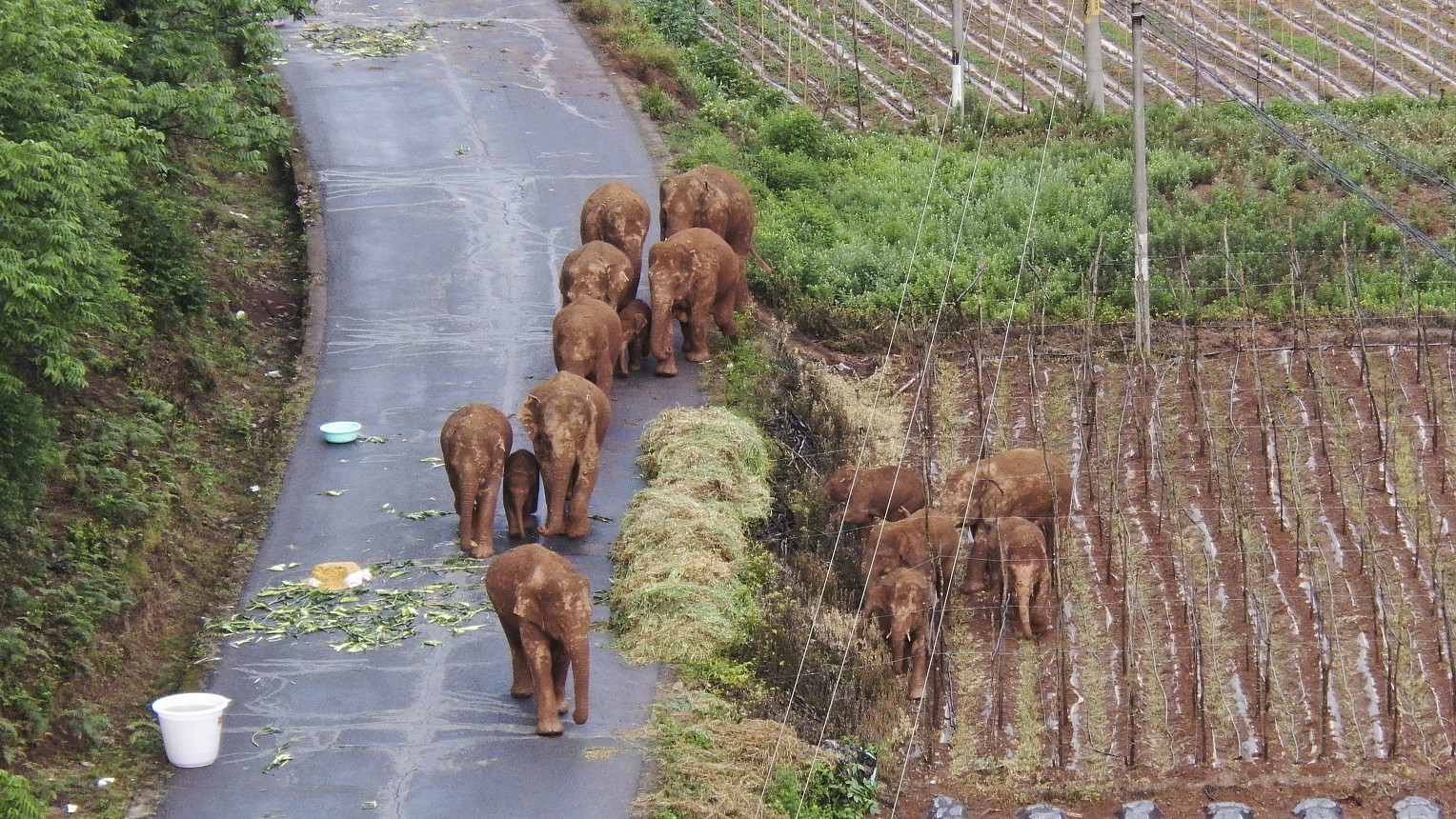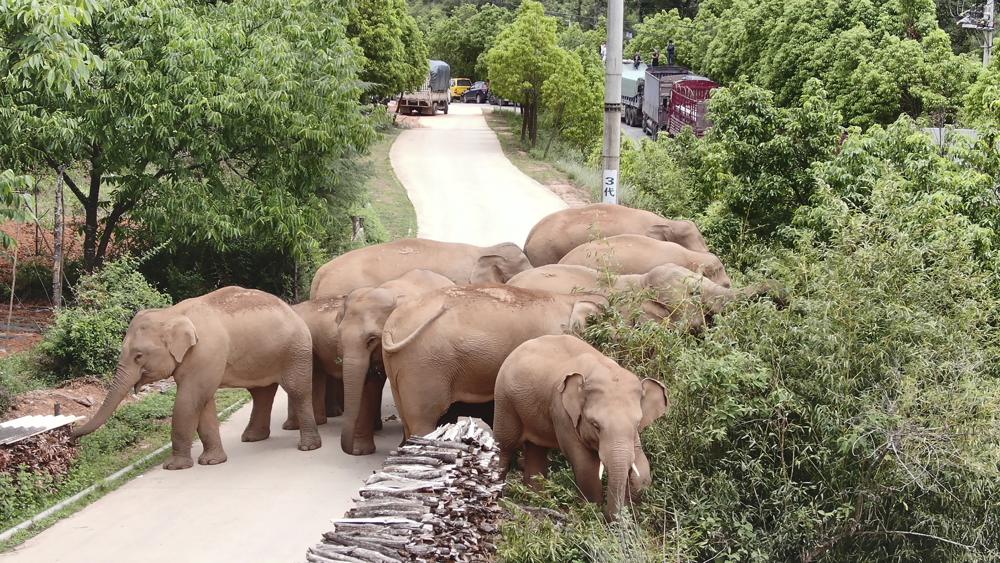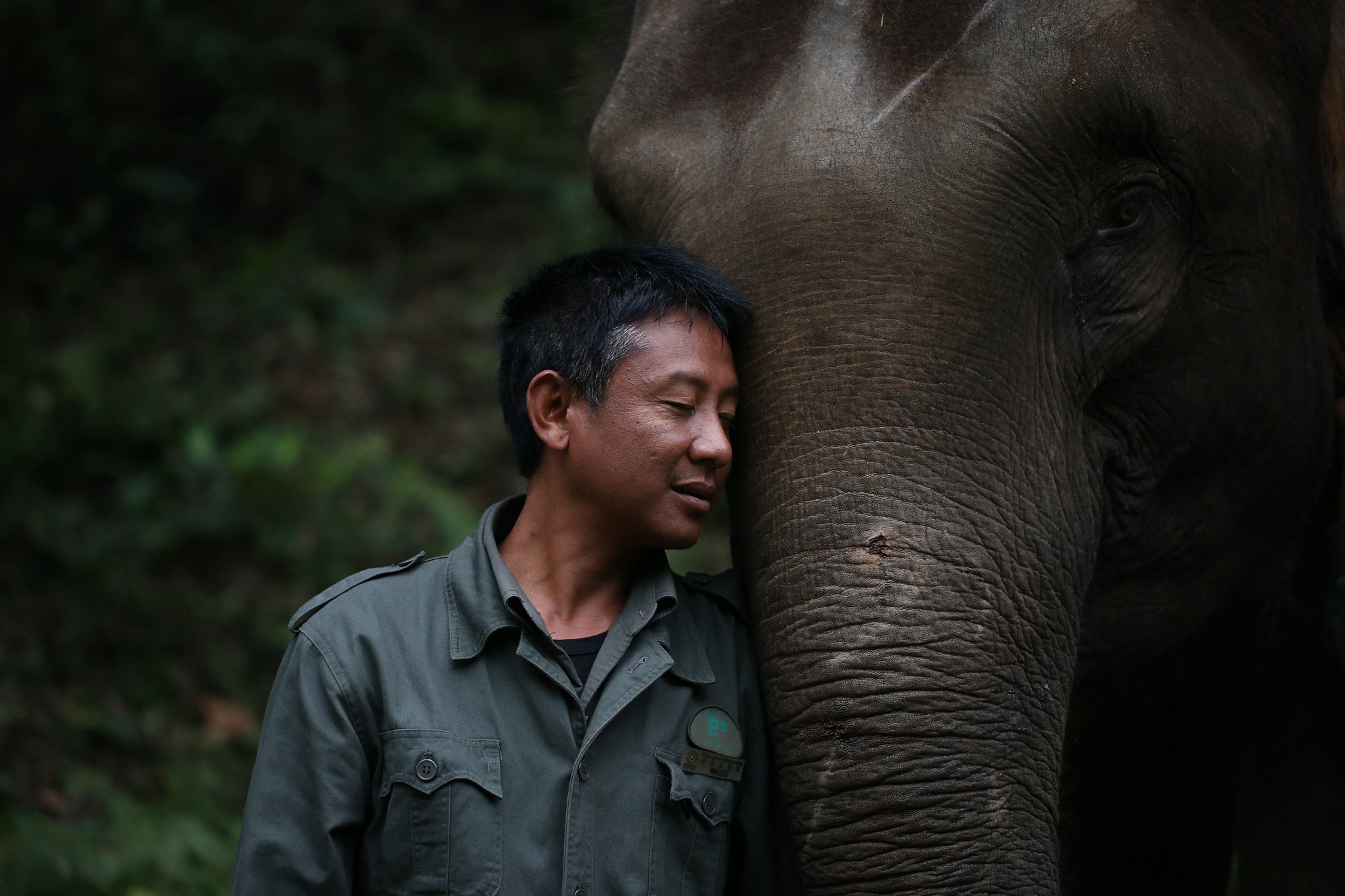
A migrating herd of elephants rests near the Xinyang Township in the Jinning District of Kunming city of southwest China's Yunnan Province, June 7, 2021. /Yunnan Forest Fire Brigade
A migrating herd of elephants rests near the Xinyang Township in the Jinning District of Kunming city of southwest China's Yunnan Province, June 7, 2021. /Yunnan Forest Fire Brigade
The epic adventure of 15 wild Asian elephants continues in southwest China's Yunnan Province as the world watches in fascination. With all eyes on the bulky travelers' next move, this curious case has also brought a rare level of awareness to the endangered species and their homeland.
In the past 40 days, the herd trekked an incredible 500 km distance northward from their natural habitat in Xishuangbanna Dai Autonomous Prefecture to the outskirts of the provincial capital of Kunming, a city of more than eight million people.
Although it is still unclear what made the group venture out of their tropical forest home some 15 months ago, long-time observers and wildlife experts have consistently pointed to increases in the Asian elephant population and changes in the forest ecosystem as the main causes behind the escapade.
Watch: Reasons behind Asian elephants' wandering
On Sunday, forestry authorities in Yunnan announced that the province will officially start compensation procedures for residents affected by the roaming elephants, which have trampled through villages and farmland in recent weeks, causing at least $1.1 million worth of damages.
So far, no human casualty has been reported, thanks to swift mobilization by local authorities to mitigate the impact on people living along the elephants' migrating route.

Tons of corn and pineapples are laid on the road to make food trails to keep the elephants from entering inhabited areas. /Yunnan Forest Fire Brigade
Tons of corn and pineapples are laid on the road to make food trails to keep the elephants from entering inhabited areas. /Yunnan Forest Fire Brigade
However, an effective monitoring and response system was not put together in one day. For many local farmers, who have shown remarkable tolerance toward their tusked visitors, learning to coexist with the jungle giants wasn't always easy.
Living side by side with elephants
Sightings of wild elephants started in the early 1990s in Pu'er, a mountainous area north of Xishuangbanna. Until then, few people had seen a wild elephant, let alone know what to do with them, said Shen Qingzhong, head of the Institute of Ecology of Xishuangbanna National Nature Reserve.
The start of the elephants' northward migration was also the beginning of trouble for local communities. Since 1991, more than 60 people have been killed during encounters with Asian elephants in Xishuangbanna, with 12 deaths recorded in 2019 alone, which experts attributed to the drought that year.
Asian elephants have top-level protection under Chinese law. Thanks to decades of conservation efforts, their numbers have doubled from around 150 to 300 in the last 30 years. Meanwhile, their home ranges have spread from three counties to nine, and still counting, conservation experts say.
While a diverse ecosystem thrives in Xishuangbanna's lush rainforest, the type of vegetation that elephants feed on has become harder to come by due to their replacement with woody plants. However, these intelligent mammals soon found a new food source on the edge of the natural reserve where the wild world meets human agriculture.

Screenshot shows the wandering herd of wild elephants leave a mess after visiting a villager's home. /CCTV
Screenshot shows the wandering herd of wild elephants leave a mess after visiting a villager's home. /CCTV
"After the elephants entered Menghai (a county in Xishuangbanna) and consumed too many high-energy crops like corn, their feeding habits changed," Shen noted. "So, when they crave these foods again, they know where to find them – in people's homes."
The living space for wild elephants and humans have been increasingly overlapping, Shen said. "Coexistence between humans and Asian elephants could become the 'new normal'."

A migrating herd of elephants graze near Shuanghe Township, Jinning District of Kunming city in southwest China's Yunnan Province, June 4, 2021. /Yunnan Forest Fire Brigade
A migrating herd of elephants graze near Shuanghe Township, Jinning District of Kunming city in southwest China's Yunnan Province, June 4, 2021. /Yunnan Forest Fire Brigade
From conflict to coexistence
In Xishuangbanna, where rural communities make up 60 percent of the local population, increased encounters have led to growing concerns over human-elephant conflict.
Because villagers inside the natural reserve have learned how to deal with their jumbo neighbors, it is usually people who live away from areas with elephant activities that ended up becoming their victims, Shen told CGTN.
In 2001, Dadugang Village saw the most serious incident in recent memory, where a calf was electrocuted by power wires that had been erected by some local farmers to keep wild elephants out of corn fields. The tragedy came a month after the death of an elderly villager, who was killed by wild elephants while trying to guard his field.
Accidents like these have made the relationship between humans and elephants a delicate subject for locals, who have for years prioritized the animal's well-being and spared no effort to protect the species.

Ai Hanlu, who leads a team tasked with monitoring and protecting Asian elephants, is pictured with a rescued wild elephant named Ranran in Xishuangbanna, Yunnan Province, February 15, 2017. /CFP
Ai Hanlu, who leads a team tasked with monitoring and protecting Asian elephants, is pictured with a rescued wild elephant named Ranran in Xishuangbanna, Yunnan Province, February 15, 2017. /CFP
Weighing 3 to 5 tons on average, an adult Asian elephant can crush a person to death in seconds. "To an elephant, some of their behaviors may be playful. But because of the huge disparity in body size and strength, humans can't be their playmates," Shen said.
In a world first, a public liability insurance to cover wild animal-related accidents was introduced in Yunnan in 2009, while local authorities continue to explore ways to prevent the loss of lives and property.
Effective from July 2020, China's revised Forest Law addresses the issue of habitat fragmentation, which some experts suspect is partly what is driving the elephants out on food hunts.
Wang Qiaoyan, a senior engineer at the research unit for the natural reserve, noted in an interview with China Newsweek that the fact that the elephants are comfortable around people is also evidence of conservation success.
"In the past, the villagers would use firecrackers to scare the elephants away. Now they know not to hurt them, so the elephants feel more emboldened to come out of the forest and eat crops, even during the day," Wang said.
According to the provincial Forestry Administration, plans are underway for a new national park to accommodate Asian elephants, which experts agree is the only long-term solution to keep both humans and animals out of harm's way.

